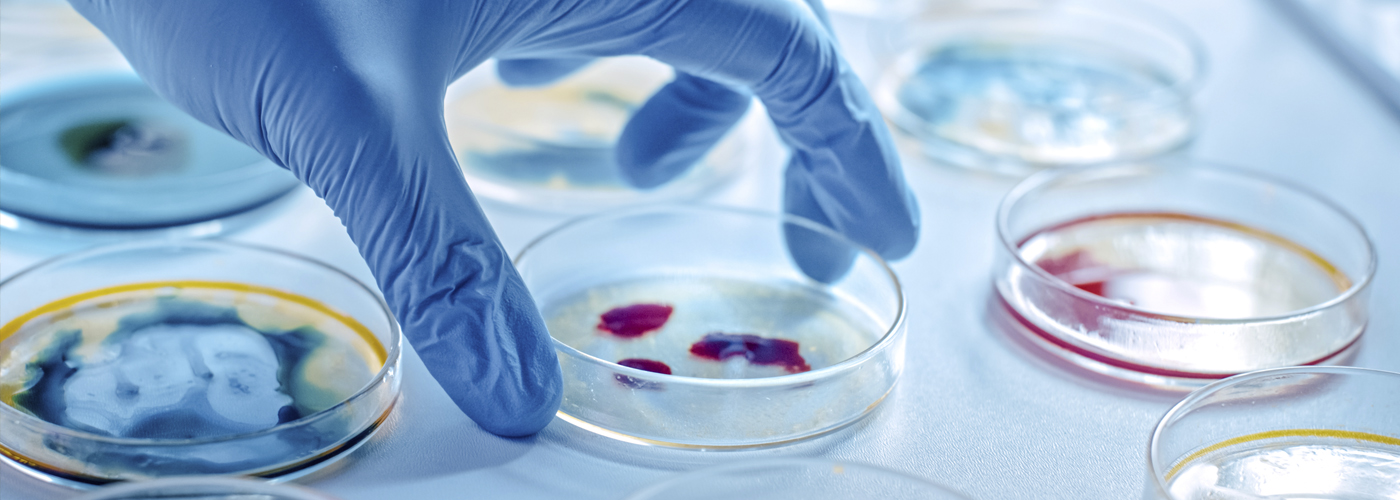To ensure we are aligned with the needs of society, we will begin the assessment of our product portfolio in 2023 and set a sustainable solutions revenue goal for 2030. This will be evaluated using the World Business Council for Sustainable Development (WBCSD) Portfolio Sustainability Assessment (PSA) or another 3rd party-validated methodology.
Improving the impact of our products
Our commitment to sustainability is closely tied to our focus on innovation and technology. Considering the recent pandemic, we recognize the critical importance of keeping people, places and the planet healthy. Our efforts to achieve sustainability encompass a range of initiatives, including preserving current technologies that protect public health and developing new, greener and more sustainable chemistries and products.
One of our key areas of focus is preventing microbial contamination in consumer products. Such contamination can have significant financial and reputational implications for manufacturers and marketers. Our preservatives are designed to inhibit the growth of harmful bacteria, yeast and fungi, thereby extending the shelf life of personal care and cleaning products. As microbes continue to evolve due to increasing population density and climate change, the threat they pose to people, places and the planet are constantly evolving. We remain committed to staying at the forefront of technology and innovation to protect public health while promoting sustainability.
We have created and instituted a product development process that goes beyond basic regulatory compliance and focuses on performance, environmental and safety goals for the benefit of customers, employees and end-users alike. In developing our products, our research and development (R&D) and operational teams work together to ensure our products support preservation in their end uses. For example, products that form a component in paints and coatings can be used to protect and preserve the material of the surface it is used on. Coatings used on wind turbines that produce renewable energy must withstand harsh weather conditions, while coatings used on appliances must withstand everyday use. Our teams work closely to ensure that our products meet all current and anticipated regulatory requirements.
In 2022, we conducted research to identify reliable and accepted approaches to evaluate and measure the impact of our products throughout the lifecycle and alignment with the United Nations Sustainable Development Goals (UN SDGs). In 2023, we will begin testing these methodologies on key products and new product innovations within each of our business units. This includes working with external frameworks, tools and experts, including the WBCSD PSA, and tools for Product Carbon Footprinting (PCF).
Innovating sustainable products
Arxada’s purpose is to advance better science to solve the world’s toughest preservation challenges.
Preservation is about protecting and maintaining the health and wellbeing of people and improving the longevity of vital infrastructure, while improving the health of the planet. Our ambition is to innovate and be part of efforts to address the UN SDGs.
Effective preservation enhances the durability of water-based products which significantly reduces waste throughout global supply chains. Preservation solutions are essential to ensure minimization of waste and safety of products. Without effective preservation, not only will significant amounts of energy and natural resources go to waste, the development of sustainable products such as paints and coatings will also be limited. This has impacts on the UN SDGs including climate change (SDG 13) and responsible consumption and production (SDG 12).
Around the globe effective preservation solutions are under threat due to increasing regulatory constraints. An increasing number of suitable active biocidal substances are cancelled, not supported, non-approved, or restricted for use. New innovative technologies are needed that make use of the currently effective biocidal actives combined with new delivery mechanisms and optimization of solutions. In addition, sustainable innovations such as bio-based technologies, adjuvants and potentiators will need to be developed.
Innovations for microbial control will require major investment and a focused effort, with long timelines to success. Partnerships and coordination with customers, NGOs, and regulatory authorities are needed to reduce the uncertainty of the ever-changing regulatory requirements.
Arxada will provide insight into the most exciting developments as a responsible innovation leader and showcase new technologies that push the boundaries of what is possible for achieving more sustainable preservation solutions.
Looking forward to 2023
In 2023, we will begin deploying the WBCSD PSA to proactively identify and address improved sustainability outcomes of new product innovation, ranging from the product chemistry to the SDG impacts of our products.
Implementing a common methodology built on industry best practices provides a robust, pragmatic and integrated approach to steer our product portfolio sustainable innovation efforts. As sustainable design definitions and methodologies evolve, we will adapt to ensure we are holistic in our approach to sustainable innovation.
Expanding our hygiene portfolio using sustainable chemistry
For several years, we have been working to expand our hygiene product portfolio to include disinfectant cleaners based on sustainable chemistry. The efforts of our North American hygiene product team have led to the development and launch of several products that utilize active and inert ingredients included on the U.S. Environmental Protection Agency’s (EPA) Safer Choice Ingredient List (SCIL).
We began by expanding our portfolio with disinfectant wipes and liquids based on Hydrogen Peroxide, which breaks down into oxygen and water. These products include our NUGEN® enhanced hydrogen peroxide (EHP), ready to use (RTU) wipes for industrial and institutional markets (I and I), and consumer applications, the former of which is also approved by the EPA’s Design for the Environment, a certification for pesticides administered by EPA’s Safer Choice Program. For our work, we earned a Safer Choice Partner of the Year award in 2021.
This year, we continued expanding our sustainable product portfolio through the launch of our NUGEN® Citric Guard Disinfectant wipes (CG Wipes). We partnered with a substrate producer to develop the CG Wipes, enabling us to develop a wipe substrate based on cellulose fibers approved on the SCIL. While we are awaiting approval for EPA’s Design for Environment certification, the CG Wipes have already been approved for a United States Department of Agriculture (USDA) Bio Preferred certification that calculated a 94% biobased content of our wipes. The CG Wipes were developed for the North American market; it is undergoing registration with the U.S. EPA and Health Canada, and we are currently testing and exploring the regulatory requirements for other regions like Australia.
Industrial timber still has many applications in today’s world, including railway sleepers, utility poles, as well as in heavy-duty agricultural applications. Traditionally, Creosote (a wood preservative pesticide) has been used to protect the timber and increase its longevity. Notably, the safety and environmental credentials of Creosote have been under review in Europe for years, and its use has been restricted under the EU’s Biocidal Products Regulation (BPR). Over the past decade, our wood protection R&D team has worked to develop a BPR authorized alternative; in April 2021, we introduced Tanasote®. The oil-based copper wood preservative is designed to deliver a long service life (typically beyond 40 years depending on timber species and end-use application), while minimizing the risk of early failures. It is the only oil-based wood preservative approved under the BPR, and all its active ingredients are approved for wood preservative use in Europe. Tanasote® has passed the BPR’s risk assessments to be used for the treatment of timbers in industrial heavy-duty applications both above ground and in-ground contact. During our extensive R&D process, we tested the performance of the product beyond the required industry standards to ensure that a longer service life for industrial-use timber can be achieved. This included testing in high humidity, aggressive field test sites and laboratory fungal studies. In addition, to provide confidence in our test performance data, it was reviewed by a third party and we engaged in full scale trials with commercial partners across Europe, including railway sleepers, utility poles, equestrian and agricultural fencing.Tanasote® – helping keep wood in the game

